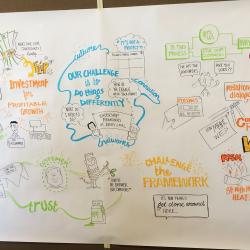Research in our schools focuses on the relationship between culture, wellbeing and technology – driving innovation in practice and engagement with industry.

Research in our schools
School of Architecture

The design professions are in a transitional period. Climate change, racial and gender injustice, and the global pandemic have shaken our disciplinary foundations in vital, generative ways.
Forward-looking institutions and practices are experimenting with new terms for design excellence, examining professional values, collaborating widely, and focusing on public engagement.
At UTS we are organising our research around three capacious themes:
- Climate Change: Decarbonisation and Preventing Biodiversity Loss
- Inclusivity: Decolonisation and Designing with Country
- Equity: Urban Transformation and Housing Affordability
Partner with the School of Architecture
School of Built Environment
Shape the world you want to live in

The UTS School of Built Environment (SBE) brings together construction, property, planning and project management.
Our research is characterised by industry leadership and experience in the areas of:
- Social justice; social procurement, youth unemployment, affordable housing, secure urban settings, and gender equity,
- Social enterprise; green buildings, physical and mental health care, aged care, energy management, and green infrastructure,
- Industry transformation; strategic management of large infrastructure projects, supply chain management, and mass customisation, and
- Digital disruption; smart infrastructure, smart construction, digital twins, mobile brain/body imaging, and virtual reality.
Partner with the School of Built Environment
School of Design
Beyond design as usual

The UTS School of Design comprises the design disciplines of Fashion and Textiles, Product Design and Visual Communications (which includes Animation and Photography). The School is committed to positioning design as an agent for social, community and organisational change.
We have an internationally recognised research strength in design history and theory, and emerging expertise in new materials, change design, critical visualisation, and Indigenous design sovereignty. This research is undertaken through traditional scholarship and practice-based design methods.
